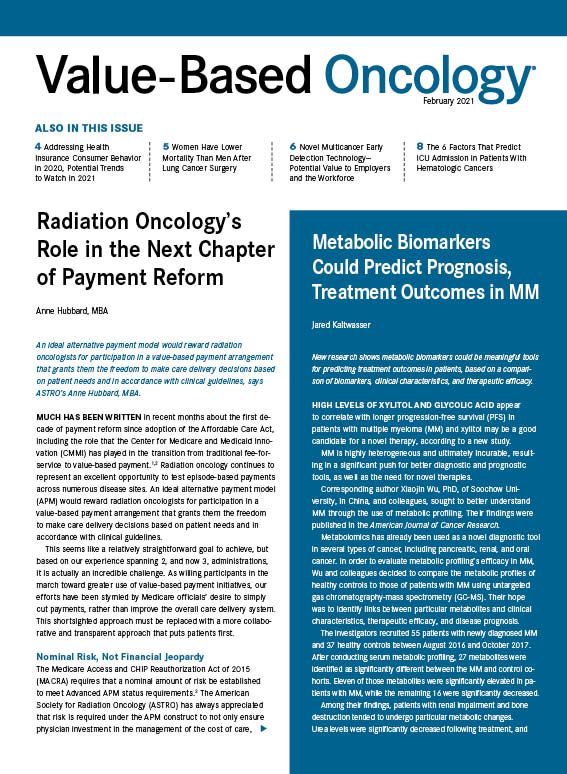- Center on Health Equity & Access
- Clinical
- Health Care Cost
- Health Care Delivery
- Insurance
- Policy
- Technology
- Value-Based Care
The 6 Factors That Predict ICU Admission in Patients With Hematologic Cancers
Both clinical and physician-based factors play a role in the risk of a patient with hematologic malignancies ending up in the ICU.
A significant number of people with hematologic malignancies will end up in the intensive care unit (ICU), so physicians should take the time to proactively discuss patients’ intentions and wishes early on in the treatment journey.
Investigators came to that conclusion following a study looking at predictors of ICU admission among patients with hematologic malignancies. They identified 6 factors that correlated with ICU admissions. Their findings were published in the journal Scientific Reports.
Corresponding author Rena Buckstein, MD, of the University of Toronto, and colleagues wrote that broadly speaking, the prognosis of patients with hematologic malignancies has improved greatly in recent decades. Yet, when such patients are admitted to the ICU, they often face very stiff odds. Contemporary reports suggest a mortality rate anywhere between 46% and 90% for patients with hematologic malignancies who are admitted to the ICU, a rate significantly higher than the general ICU population.
What is less well known, however, is which factors might be predictive of an ICU admission in patients with hematologic malignancies. While some research has looked at predictors of ICU admission in cancer generally, and other research has examined the risk among patients with a specific diagnosis, little evidence has been published on ICU risk among patients with hematologic malignancies as a category.
Buckstein and colleagues examined the question by performing a retrospective cohort analysis of 820 consecutive admissions of patients with hematologic malignancies at a tertiary care center in Toronto. The 820 patients were all admitted between March 2009 and December 2015. Most of those patients (71%) had lymphoid cancer, 18% had myeloid cancer, and 10% had plasma cell neoplasms.
Of the 820 patients admitted, 179 patients (22%) ended up in the ICU. A backward stepwise selection procedure was used for multivariable logistic regression analysis to identify the predictors of ICU admission, which were:
- Acute leukemia
- Non-curative intent chemotherapy
- Platelet counts below 50 x 109/L
- Below-normal albumin (<37 g/L)
- Elevated LDH (>250 U/L)
- Having had an advanced directive discussion in the hospital prior to ICU admission
Age was not a significant factor in a univariate analysis, so Buckstein and colleagues said it was not included in the multivariate analysis.
The investigators noted that their list of 6 factors included both clinical factors and physician-related factors.
“This latter factor likely represents the fact that physicians are more likely to have goals of care discussions with patients in impending or actual deterioration,” they wrote.
The secondary endpoint of the study was to examine outcomes and predictors of outcomes once patients were admitted to the hospital. At a median follow-up of 8.1 months, a total of 328 patients (40%) in the study had died. That includes 179 patients (22%) who died during their hospitalization or within a month of hospitalization.
A multivariate analysis showed only higher than normal LDH and receiving medical ventilation were independently predictive of death among patients admitted to the ICU.
Among the entire study population (those admitted to the ICU and those simply admitted to the hospital’s wards), factors predictive of death in the hospital or within one month of discharge were similar to the predictors of ICU admission: platelet count, low albumin, high LDH, and an advanced directive calling for no CPR to be performed. In addition, the study showed age and ICU admission were also predictors of mortality among the 820 patients.
In conclusion, the investigators said the data show the importance of having end-of-life discussions with patients prior to deterioration. They also suggested that there might be a way to use data such as these to generate a predictive score to guide clinical practice and stratify the highest-risk patients.
Reference
Vijenthira, A., Chiu, N., Jacobson, D. et al. Predictors of intensive care unit admission in patients with hematologic malignancy. Sci Rep. Published online December 3, 2020. doi: 10.1038/s41598-020-78114-7

